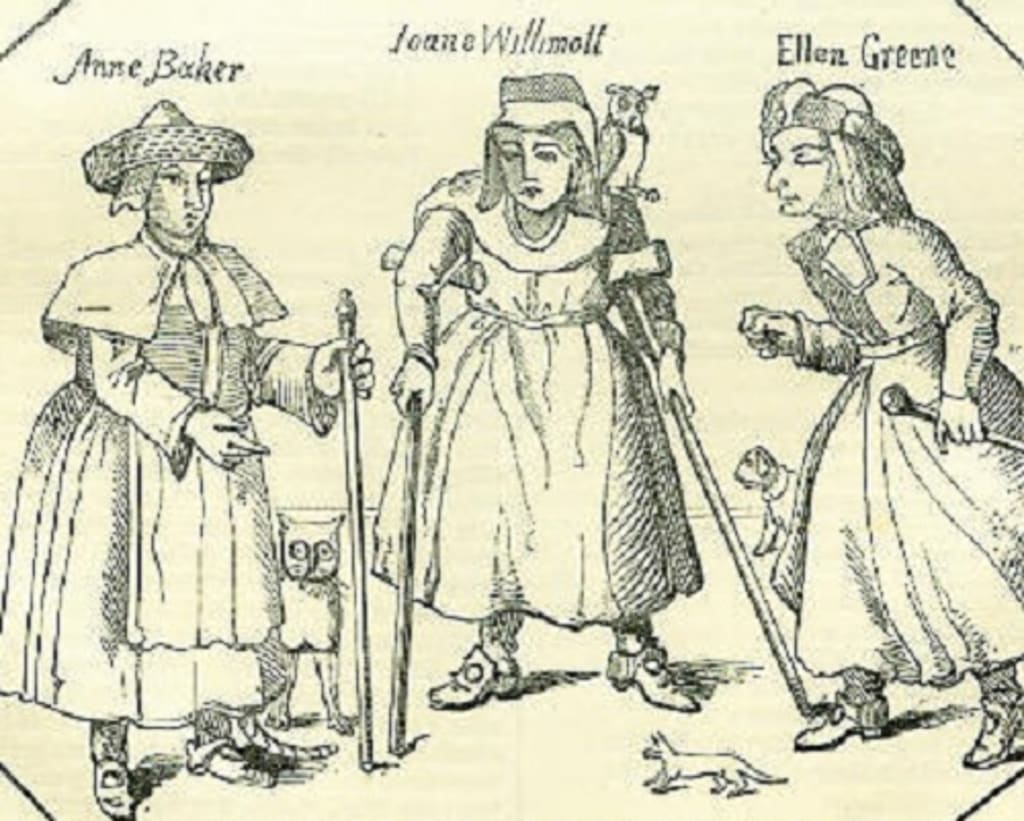Writing witches and witchery
How to write witches and witchcraft and what are the conventions when dealing with this form of fiction?

As a youngster I went through a time of being fascinated by witchcraft and the occult and read authors like Wheatley, among others. These days, I like writing witchy stories as much as I like reading them. There is so much fun and so many possibilities, whether your story is comedy, tragedy, history, horror, fantasy, urban gothic or science fiction. Some of the greatest characters in fiction, to me, have been witches, whether Harry Potter (known as a ‘wizard’ in the JKR stories) or Samantha in the 1960s TV show Bewitched. Who can resist the other-worldly charms of Glinda in The Wizard of Oz, or the sinister menace of her nemesis the Wicked Witch of the West? Stories of 17th century witch trials, demonic visions from the three witches in Macbeth, or just the humdrum everyday dramas of latter-day dabblers. Good witches and wicked witches hold a strong fascination for many.
But when writing witches, you have to play by the rules, right? When it comes to literary convention, I always think that you need to master the rules before you can start to bend, stretch or break them in the name of your art. After all, how can you be a disrupter if you don’t know what you are disrupting? What, then, are the rules of writing about witchcraft?
Having written a variety of different short stories about witches and witchcraft (perhaps a novel one day) I have put together a set of broad-brush rules (in the loosest possible sense) to help guide me in my journeys of composition. For, to me, the rules and conventions of literature and any specific genre, help me to create a work that is authentic, consistent, engaging and believable, however far from reality the narrative may take the reader.
The rules start with what we know about witches in a contemporary setting, as well as in history. First and foremost, we have to think about sex, in both typical meanings. Witches are usually taken to be female. Most of the persecutions in 16th Century England and colonial North America chose women as its victims. Why? Because lone, elderly women were viewed with suspicion and were a soft target. There were of course other victims, accused by the jealous, suspicious, family rivals and the down-right vindicative. Some victims were men, but the majority were elderly spinsters and widows with perhaps a few younger women who might have spurned the advances of some prominent male or otherwise caused offence. This, of course, says a lot about male power in bygone ages. Some of those who were persecuted may even have dabbled in herbal medicine or followed traditional pagan rituals, which suggest a need to enforce church dominance. Few, if any, would have seen themselves as ‘witches.’
From the fact that witches in literature tend to be female, we may develop the notion that, when they get together, witches may well form some kind of sisterhood, a female-dominated world which may rival (or even oppose) masculine power bases of church or local government. We can perhaps see a big element of feminism in the witchy world, in the way that Germaine Greer has identified convents as feministic settings. That is not to say that there are not male witches too but there is certainly no room for any assumption of masculine authority in the world of the witch. This also mirrors tribal power structures in the British islands, in which Roman (and subsequent Saxon, Norman and Christian) patriarchal views of the world did not always prevail.
The other important aspect of sex is that witches do not necessarily feel bound by religious sensitivities when it comes to sexual activity. T his may be true among contemporary witches (though one should not over generalize) and may be considered an optional element in fictional witchery. Erotica is not an essential element in a witchy story and shouldn’t be in many cases especially, of course, in children's stories. In stories aimed at adults, however, a witch would have no need of monogamy or to be inhibited in respect of her sexual needs. In particular, witches may be disinclined to marry, it at least suggesting a surrendering of power to a man. If you recall the story of Samantha, played in the TV show Bewitched by the wonderful Elizabeth Montgomery, you will know that her marriage to an ordinary man with no magical powers was the source of all of the drama and the ‘situation’ in this situation comedy. Witches (in this story at least) are not meant to marry, and Sam’s mother was constantly trying to play mischief with her daughter’s marriage and to retain the matriarchal line of witches through her baby granddaughter, Tabitha.
As writers, we can of course use such conventions to advantage, whether we follow the conventions or break them. If witches are not meant to marry, what if one did? That is the whole story of Bewitched.
What other conventions surround witches and witchcraft? I will be discussing this issue in a further blog if there is any interest. Please let me know if you would like me to continue the series and explore other aspects of fictional witchery by leaving a comment.
Thanks for reading.
Please leave a comment below telling me what you thought.
Check out my witchy short stories:
Other short stories, flash fiction and articles
Image: public domain, Wikimedia Commons. Three of the women examined in the case of the Witches of Belvoir, around 1619. Illustration from the Book of Days
© Raymond G. Taylor, 2022, all rights reserved. The author has asserted his right to be identified as the author of this work.
Raymond G. Taylor is a UK-based author of short stories who has recently published his first novel, Run with the Pack. He writes in many genres including mystery, science fiction, love, adventure, western and covers a wide range of topics and genres in his short stories.
You can read some of his short stories here
More in his collection Short and Sweet
Please visit the author on Facebook: Raymond.G.Taylor.author
About the Creator
Raymond G. Taylor
Author based in Kent, England. A writer of fictional short stories in a wide range of genres, he has been a non-fiction writer since the 1980s. Non-fiction subjects include art, history, technology, business, law, and the human condition.






Comments (2)
You are preaching to the choir here. I loved every one of those shows, the classics cannot be beaten for witchiness.
Loved and subscribed! Can't wait to read more of your work! Consider having a look at mine and if you like it, please subscribe... there's a lot to come! I look forward to seeing more of your work!